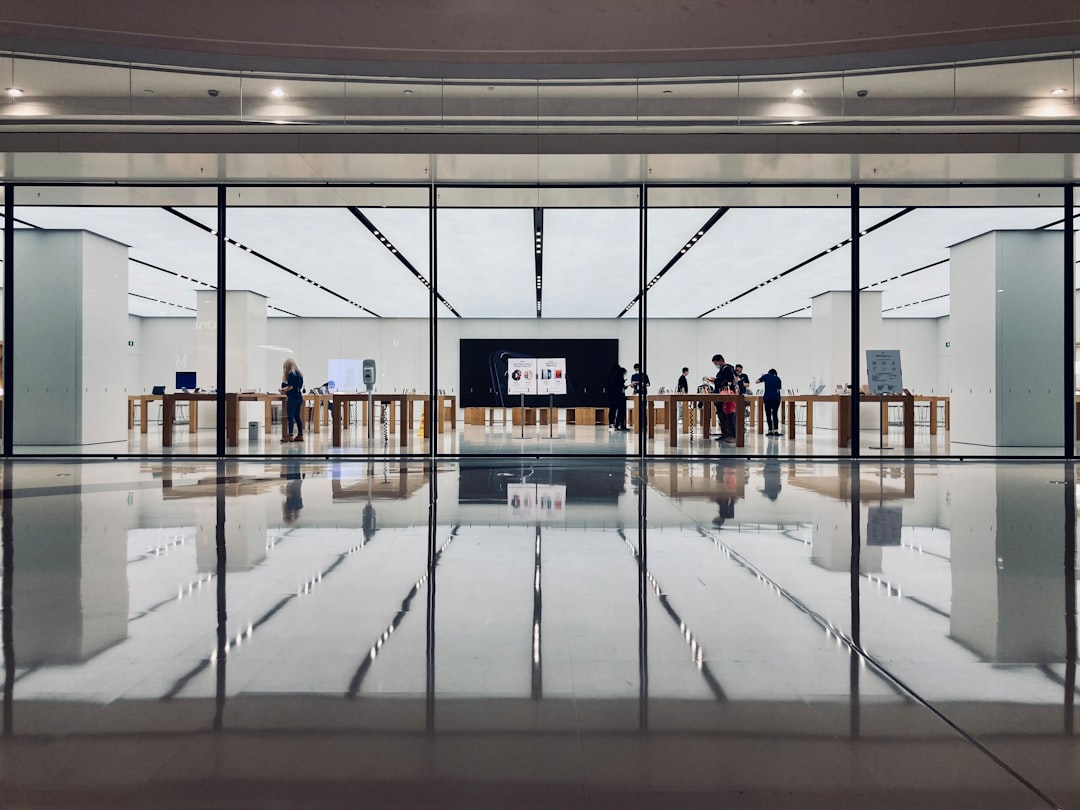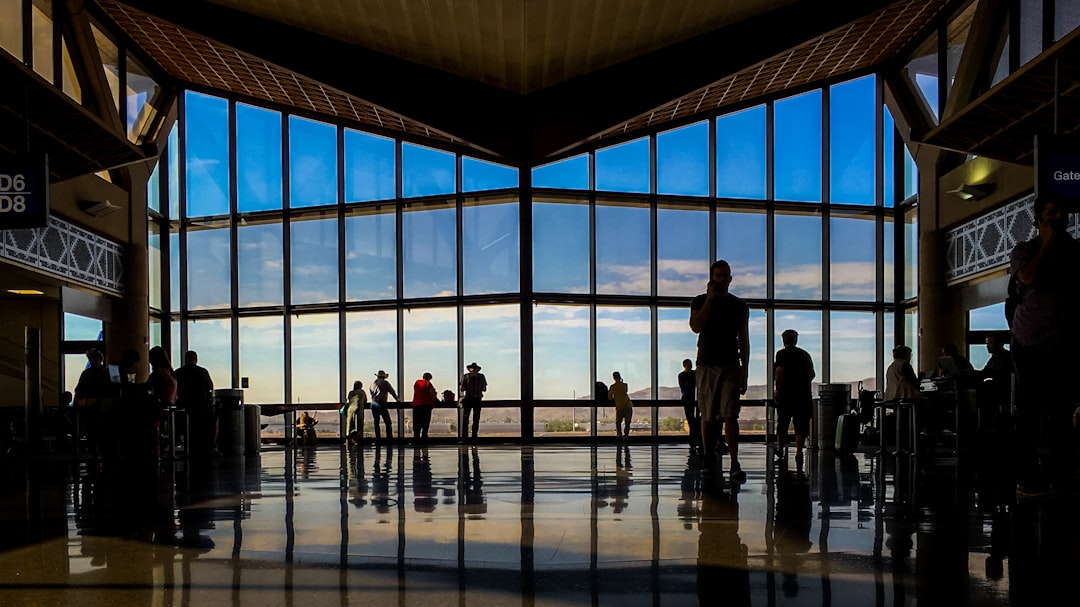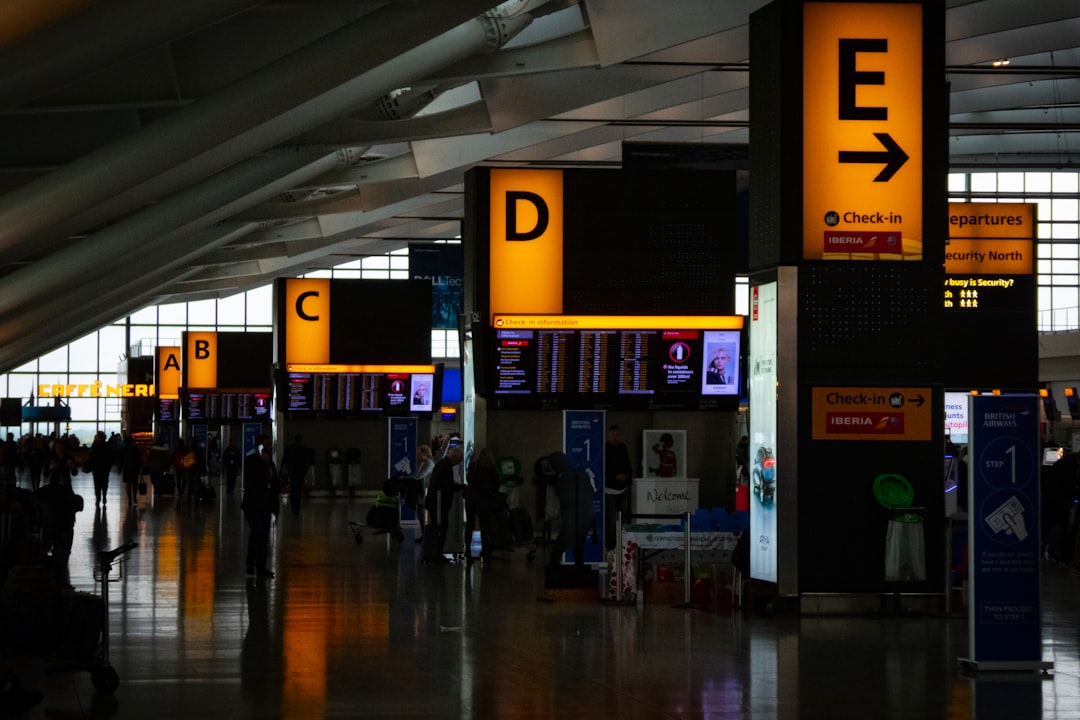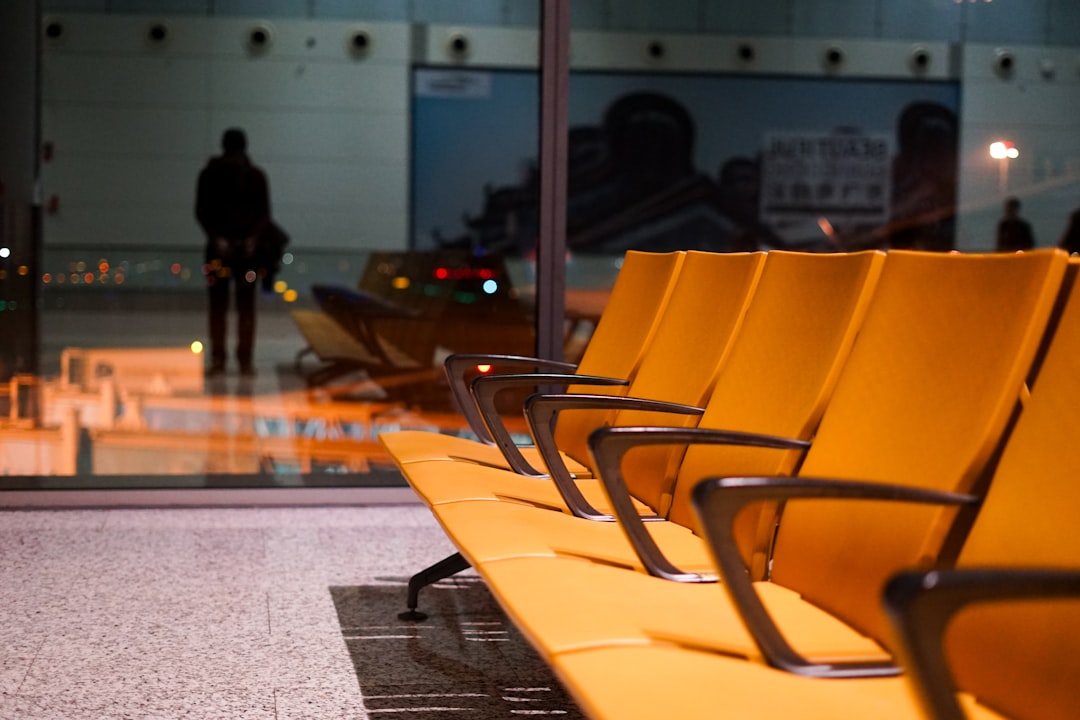Fort Wayne International Airport Unveils New Terminal Expansion, Boosting Capacity and Passenger Experience
Fort Wayne International Airport Unveils New Terminal Expansion, Boosting Capacity and Passenger Experience - New 35,000 Square Foot East Terminal Addition

Fort Wayne International Airport's new 35,000 square foot East Terminal addition isn't just about adding space; it's about creating a more functional and user-friendly experience for passengers. This expansion is part of a larger $70 million project that aims to modernize the entire airport. The new addition, while a significant investment, is still just one piece of the puzzle. It'll be interesting to see how these upgrades translate into real-world improvements for travelers. Will it be enough to handle the airport's growing passenger numbers? We'll have to wait and see.
A 35,000 square foot addition to the East Terminal is a significant undertaking, effectively doubling the terminal's footprint. It's interesting to see how they plan to incorporate advanced systems for passenger processing. Will these systems actually reduce wait times or are they just another example of the "technology for technology's sake" trend? I'm curious about the claims of increased energy efficiency through thermal insulation. Are they using any innovative materials or techniques here? The emphasis on passenger movement and intuitive navigation is a common theme in modern airport design, but I'm curious to see how this is actually implemented in practice. I wonder if this will translate into a more pleasant passenger experience, as they claim. The terminal's design takes into account regional flight patterns and seasonal variations, which is good, but I'm skeptical about the claims of increased capacity for international flights. Will they actually be adding additional gates or are they just hoping to cram more passengers onto existing facilities? The use of high-strength concrete and specialized glazing for durability is certainly appealing, but I'll be watching to see if these materials hold up under real-world conditions. The increased natural light through skylights is a positive, but I hope they've considered the impact on glare and heat gain. With the addition of flexible spaces, it's clear they're anticipating a future that is unpredictable. This flexibility could prove to be a significant advantage in the long run.
Fort Wayne International Airport Unveils New Terminal Expansion, Boosting Capacity and Passenger Experience - $70 Million Investment in Project Gateway

Fort Wayne International Airport is pouring $70 million into Project Gateway, a major overhaul of the East Terminal. The project, which adds 35,500 square feet to the terminal, is meant to make the airport more spacious and convenient for travelers. The renovations include moving the aircraft gates, which is intended to improve the flow of passengers, but it remains to be seen if this change will actually reduce wait times and streamline the boarding process. Work began in June 2023, with the project set to be completed within two years. The airport is hoping to improve accessibility and efficiency with this expansion, especially considering the rising number of passengers passing through Fort Wayne. However, the true impact of the changes will likely be the subject of ongoing analysis as the project progresses.
The $70 million investment in Project Gateway at Fort Wayne International Airport raises several interesting engineering and design considerations. It's clear that the airport is trying to future-proof its infrastructure, anticipating a rise in passenger numbers. I'm particularly interested in the potential use of biometrics for faster passenger verification. Could this really achieve a 30% reduction in processing times, or are they overstating the benefits?
The high-strength concrete used in the terminal's construction promises increased durability, a critical factor given the heavy wear and tear airports experience. However, I want to see if these materials truly hold up under real-world conditions over time. Their claims of improved energy efficiency through thermal insulation sound promising, but what kind of materials are they using? Is there any innovative technology employed here?
The emphasis on natural light through skylights is a common feature in modern airport design. I'm curious if they've accounted for the potential glare and heat gain this might create. It's fascinating that they're designing the terminal with flexibility in mind, anticipating an unpredictable future. However, the claims of increased capacity for international flights seem questionable. Will they actually add more gates, or are they simply hoping to cram more passengers onto existing facilities?
The specialized glazing they're using is intended to improve durability and reduce maintenance, but how does it impact thermal performance? Will it truly cut down on cooling loads? The inclusion of intuitive navigation features is great, but how will it compare to other airports that have already implemented similar systems? Will it genuinely improve the passenger experience, or will it simply add to the overall complexity? I'm skeptical about how the new terminal will be able to handle the increased passenger flow, and I'll be watching closely to see how these upgrades translate into real-world improvements for travelers.
Fort Wayne International Airport Unveils New Terminal Expansion, Boosting Capacity and Passenger Experience - Expanded Concourse Area and Updated Facilities

The expanded concourse area at Fort Wayne International Airport is a key part of their Project Gateway renovation. The airport is adding 10,500 square feet to the concourse, which should make moving around easier and hopefully reduce congestion. They're also moving all the gates to the second floor, which is supposed to make boarding easier, but it remains to be seen if this will actually work in practice. The airport is also adding some modern upgrades like new finishes and improved navigation, all aimed at making the airport more passenger friendly. It'll be interesting to see how all of these improvements affect the airport experience, especially since the airport has been seeing an increase in passengers in recent years. We'll have to wait and see if the expansion actually helps with the flow of people and makes the airport better for everyone.
The expanded concourse area at Fort Wayne International Airport is more than just adding square footage; it's an experiment in using technology to improve the passenger experience. They've introduced automated kiosks and virtual queuing systems, which they claim will significantly reduce boarding times. It'll be interesting to see how these systems actually work in practice. Will they be user-friendly, efficient, and actually reduce wait times, or will they be another case of technology for technology's sake?
The choice of high-strength concrete is another point of interest. It promises increased durability and fewer repairs, which is critical for any airport. But will it stand up to the test of time and heavy foot traffic? We'll have to wait and see how it performs in the long run.
The concourse area's design prioritizes intuitive navigation, which is always a good thing in airports. They've used passenger flow analytics to inform the layout, but how effective will it be in practice? Will signs be clear and communication effective enough to avoid confusion, or will it be another example of good intentions gone awry?
The specialized glazing is intended to improve thermal performance and reduce energy consumption. But will it actually work? How much impact will it have on cooling loads? Will it be effective in real-world conditions? We need to monitor the thermal performance of the glazing to see if it lives up to its promises.
The expansion includes flexible spaces, which is a good idea in an uncertain future. It allows for potential repurposing, which could prove invaluable in the long run as passenger patterns and airline demands shift.
Natural light is a key feature in the new concourse, thanks to the large skylights. But I wonder about the potential glare and heat gain this might create. Will the design address these issues, or will passengers end up squinting and sweating in their attempts to enjoy the natural light?
The expansion will add five new gates, targeting international flights. It's good to see them thinking about international expansion, but can the existing infrastructure handle the increased passenger flow? Will they actually be able to accommodate the projected growth, or will it be another case of overpromising and under-delivering?
Biometrics will be used for passenger verification, which sounds like a great idea to streamline security processes. But how much faster will it actually be? The claim of a 30% reduction in processing times needs to be tested to see if it's realistic.
The expansion itself is a response to a larger trend in aviation: addressing congestion and increasing capacity. It will be interesting to compare Fort Wayne's expansion to similar projects at other airports. What are the lessons learned from those projects? What best practices should Fort Wayne be adopting?
The focus on improving accessibility is encouraging. But the real test will be in how these improvements actually work in practice. Will they meet diverse passenger needs, or will they simply be a box-checking exercise to meet minimum standards? It's crucial to get feedback from passengers and conduct ongoing assessments to ensure these initiatives truly improve accessibility.
Fort Wayne International Airport Unveils New Terminal Expansion, Boosting Capacity and Passenger Experience - Increased Capacity to Serve Growing Passenger Numbers

Fort Wayne International Airport is in the midst of a major expansion to meet a surge in passenger numbers. The new 35,000 square foot addition to the East Terminal includes two new gates, bringing the total to ten. This project comes as passenger traffic has soared, with July 2023 seeing a 116% increase in enplanements compared to the previous year. While the new space and upgrades promise to improve the travel experience, it remains to be seen how effectively they will manage passenger flow and enhance efficiency. The airport is betting big on this expansion to accommodate continued growth, but only time will tell if it will be enough to meet the demands of a rising number of travelers.
The Fort Wayne International Airport's expansion is an ambitious undertaking, aimed at accommodating an additional million passengers annually. This ambitious goal will undoubtedly test the airport's infrastructure, and the impact on its overall efficiency remains to be seen. It'll be fascinating to see how the airport manages this influx of travelers, particularly as passenger numbers continue to rise.
The incorporation of automated kiosks and virtual queuing systems to reduce boarding times sounds promising, but the real-world effectiveness of these technologies is yet to be determined. Will they actually deliver on their promise of streamlined boarding, or will they simply create more complexity? It will be interesting to see how these systems are implemented and how they perform under real-world conditions.
The implementation of biometric technology for passenger verification is another intriguing aspect of the expansion. While the airport claims a 30% reduction in processing times, it's essential to assess the actual effectiveness of this system and its ability to handle the anticipated surge in passenger traffic.
Adding five new gates specifically for international flights is a bold move, but it raises questions about the terminal's capacity to process a larger number of international travelers. Will the existing infrastructure be sufficient, or will bottlenecks become a common occurrence? It's important to evaluate the airport's ability to manage the flow of international travelers through its facilities.
The use of passenger flow analytics to enhance navigation within the terminal is an interesting engineering challenge. Can intuitive signage and layouts truly minimize confusion, or could they inadvertently create problems for travelers? The real test will be how these design elements perform in practice and whether they make navigating the airport a smoother experience.
The airport's decision to use high-strength concrete and specialized glazing is intended to improve durability and reduce maintenance, but the long-term performance of these materials under heavy use remains a crucial aspect. It's critical to monitor their performance over time to ensure they stand up to the demands of an airport environment.
The incorporation of natural light from large skylights is touted as a positive design element, but concerns remain over glare and potential heat gain. These factors could impact passenger comfort, and it's essential to ensure that the design adequately addresses these issues to create a comfortable environment.
The inclusion of flexible spaces in the terminal's design is a wise move, anticipating evolving airline and passenger demands. However, this adaptability relies on effective management and operational strategies to ensure the spaces are utilized effectively and meet future needs.
The airport's expansion is a response to a broader trend in the aviation industry: addressing congestion at increasingly busy airports. It will be interesting to compare Fort Wayne's expansion to similar projects at other airports and learn from their successes and challenges.
The success of the expansion will depend heavily on continuous assessment and feedback mechanisms. Ensuring that the enhancements meet diverse passenger needs, both in logistics and comfort, will be paramount in the years to come.
Fort Wayne International Airport Unveils New Terminal Expansion, Boosting Capacity and Passenger Experience - Continuation of Airport's Multi-Phase Improvement Plan

Fort Wayne International Airport's multi-phase improvement plan continues with Project Gateway, a $70 million overhaul of the East Terminal. This major undertaking aims to expand the airport's capacity and improve the passenger experience. The project will create more space, relocate gates, and update facilities to accommodate the growing number of travelers. The airport is incorporating new technologies, but whether these advancements truly enhance efficiency and improve the passenger experience remains to be seen. While the goal is to future-proof the airport's infrastructure, only time will tell if the improvements will effectively address the challenges of increased passenger traffic and streamline operations.
Fort Wayne International Airport's expansion project is ambitious, with plans to handle a million additional passengers annually. This significant undertaking will test the airport's current infrastructure. It will be fascinating to observe how the airport plans to manage this influx of travelers, particularly given the expected continued growth.
The integration of automated kiosks and virtual queuing systems is meant to make boarding faster, but how practical these systems are remains to be seen. Will they be intuitive to use and reduce wait times in real-world settings, or will they simply add another layer of complexity for passengers?
The use of biometrics for passenger verification is another intriguing element of the expansion. The airport claims it could cut processing time by 30%, but this needs to be tested in practice to ensure its effectiveness, especially during peak hours.
Adding five new gates dedicated to international flights is a bold move, but it raises questions about whether the airport's current infrastructure can handle a substantial increase in international passengers. Will it be able to efficiently handle the projected growth, or will bottlenecks emerge?
The airport is employing passenger flow analytics to design intuitive navigation features, aiming to minimize confusion for passengers. However, it remains to be seen whether these features will effectively guide passengers, particularly during peak times.
The choice of high-strength concrete for the terminal is intended to improve durability and minimize maintenance, but its performance over time needs to be monitored. Will it hold up well under constant heavy use, or will it require significant upkeep?
The specialized glazing aims to improve thermal performance, potentially reducing energy consumption. However, its real-world impact on heat gain and overall energy efficiency needs to be assessed after implementation.
Large skylights are a prominent feature of the design, offering natural light and potentially enhancing the passenger experience. However, mitigating potential glare and heat gain is crucial to ensure passenger comfort.
The expansion includes a 10,500 square foot concourse addition with relocated gates on the second floor, aiming to improve passenger flow and simplify the boarding process. But whether this change actually addresses congestion issues needs to be evaluated after construction.
The airport's inclusion of flexible spaces shows a thoughtful consideration of evolving airline and passenger needs. However, efficiently managing these spaces and ensuring they are adequately utilized to address future needs is essential.
Overall, Fort Wayne International Airport's expansion is a substantial undertaking, reflecting a growing trend in the aviation industry to address congestion. It will be interesting to see how Fort Wayne's project compares to similar expansions at other airports. Comparing best practices and lessons learned from these projects will be beneficial. The expansion's success will rely heavily on continuous assessment and feedback. Ensuring the upgrades cater to diverse passenger needs and enhance overall comfort will be vital for the airport's long-term success.
More Posts from kevinsflight.club: